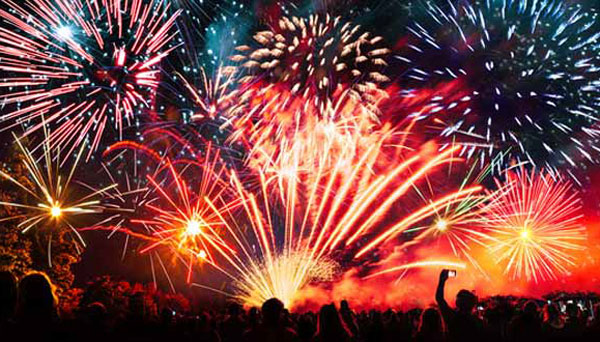September 20, 2025
“A burst of light, but a piercing cry,
Babies tremble, elders sigh.
Tradition thrives when health is secure,
True celebration must be kind and pure.”
In recent years, India has made significant strides in balancing cultural celebrations with public health. Yet one pressing concern remains inadequately addressed: the unchecked use of firecrackers during late-night hours.
As cities light up with fireworks late into the night, the sky becomes a canvas of fleeting brilliance. While fireworks symbolize festivity, their impact stretches far beyond momentary enjoyment.

For babies and children, sudden bursts of sound translate into fear, disrupted sleep, and heightened anxiety. Pregnant women face additional health risks, with loud, unexpected noises capable of elevating stress levels that directly affect both mother and child. Elders, too, bear the brunt — startled, sleepless, and often left grappling with aggravated health conditions such as high blood pressure and heart strain.
Medical studies have shown that sudden, high-decibel noise can trigger anxiety, sleep disturbances, and cardiovascular strain — particularly among infants, children, pregnant women, and the elderly. These groups form some of the most vulnerable sections of our society, and their well-being must not be compromised in the name of celebration.
The issue is not about tradition or celebration but about timing and respect. What might feel like a moment of joy for some translates into hours of distress for others. Cities that claim to be moving toward progressive governance cannot afford to overlook such an imbalance. Regulations restricting late-night firecracker use are not an attack on culture but a necessity for public health and dignity.
The Supreme Court of India, in its landmark 2018 judgment (Arjun Gopal vs. Union of India), restricted the use of firecrackers to specific time slots: 8:00–10:00 PM for festivals and 11:55 PM–12:30 AM for New Year and Christmas celebrations. Additionally, the Court directed that only “green crackers” with reduced emissions be manufactured and sold. The National Green Tribunal (NGT) has also repeatedly emphasized that state governments must enforce these restrictions, particularly in areas already burdened by poor air quality.
However, enforcement remains patchy. In many cities and towns, firecrackers continue well past midnight, startling infants, disturbing the sleep of children, elevating stress for pregnant women, and putting elders with health conditions at risk. The noise levels often cross 125 decibels, far exceeding the permissible residential limit of 55 decibels at night, as set under the Noise Pollution (Regulation and Control) Rules, 2000.
To safeguard citizens while respecting cultural traditions, stronger policy action is urgently needed:
- Uniform Nationwide Enforcement: Firecracker use must be restricted to the Supreme Court’s prescribed hours across all states, without exceptions.
- Strict Decibel Monitoring: Mandatory testing and penalties for manufacturers producing crackers above permissible noise levels.
- Public Awareness Campaigns: Nationwide drives to educate citizens about the health impact of late-night fireworks, especially on vulnerable groups.
- Local Accountability: Municipal bodies and police must be held responsible for ensuring compliance in their jurisdictions.
Festivals and public celebrations can continue to shine, but not at the cost of community health and peace. The right to celebrate cannot override the right to rest, safety, and dignity. Stronger policy action is not about curbing tradition, it is about shaping it responsibly for a society that values both joy and justice.
Every citizen deserves peace in their home at night. If the law is meant to protect, then it must draw a firm line between celebration and intrusion. Let us remember that the sky is shared and so is the responsibility of keeping it safe, quiet, and kind.